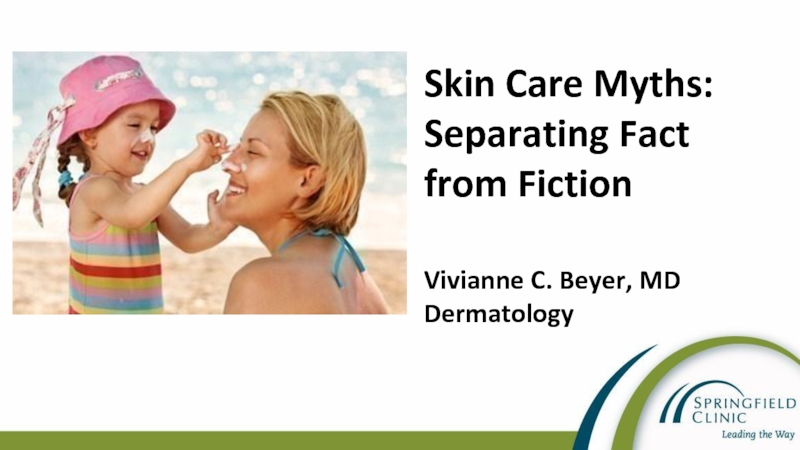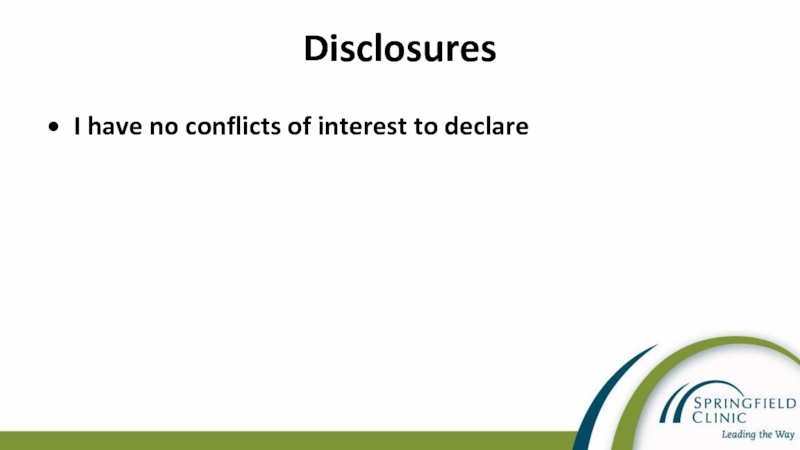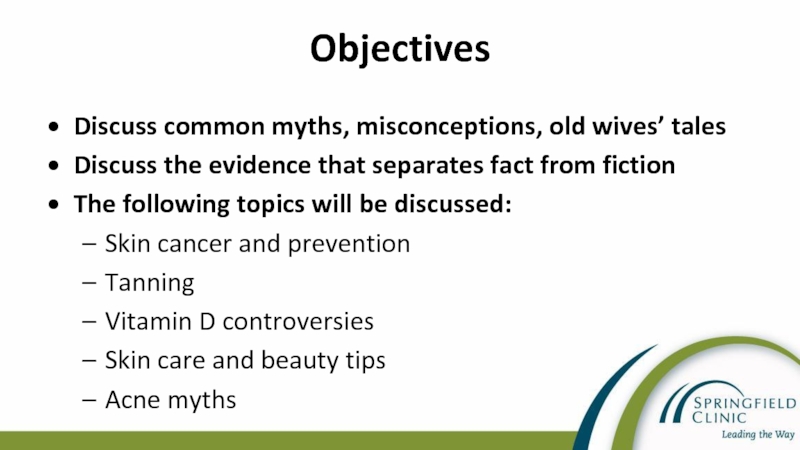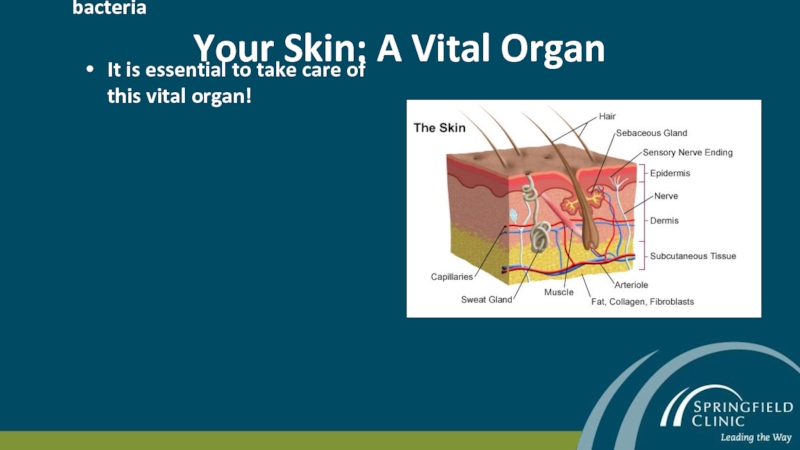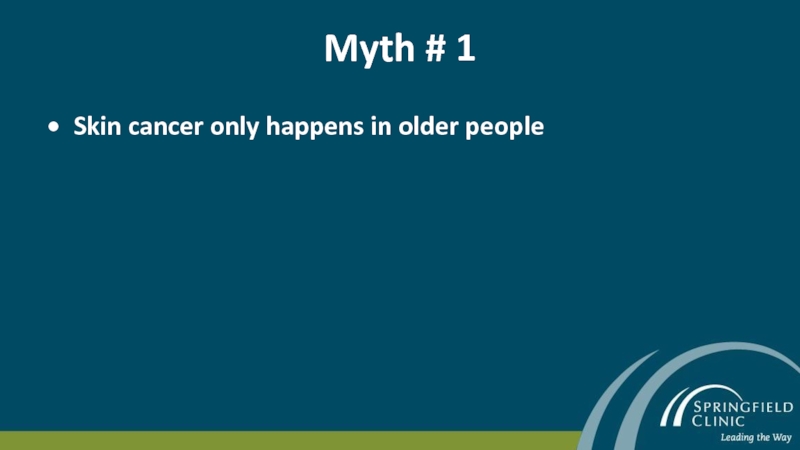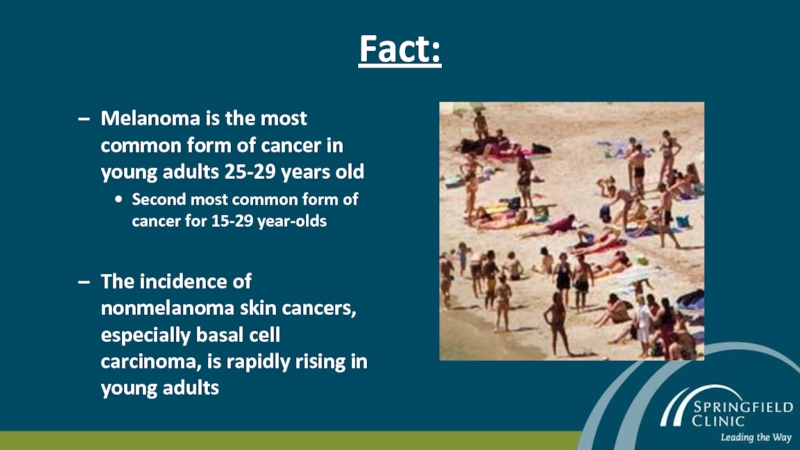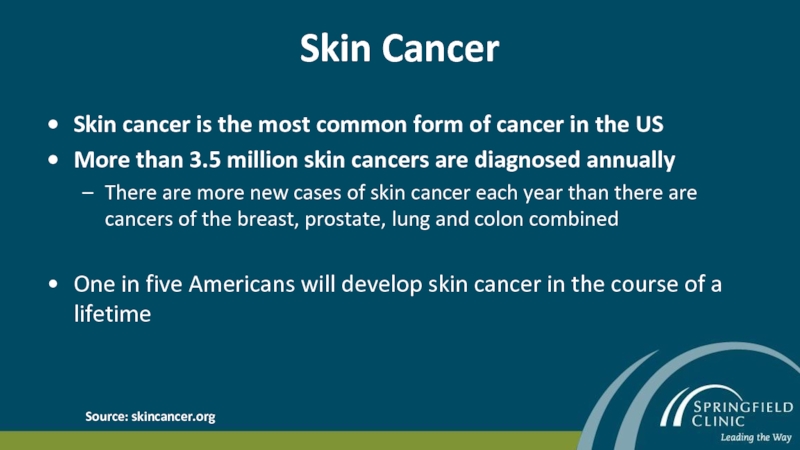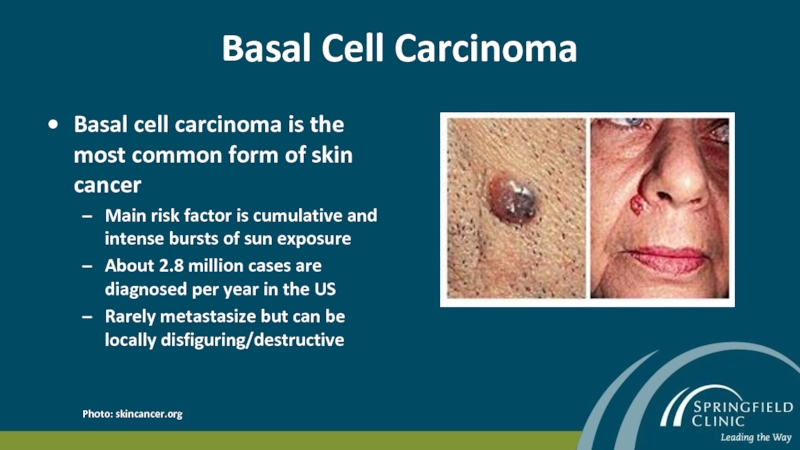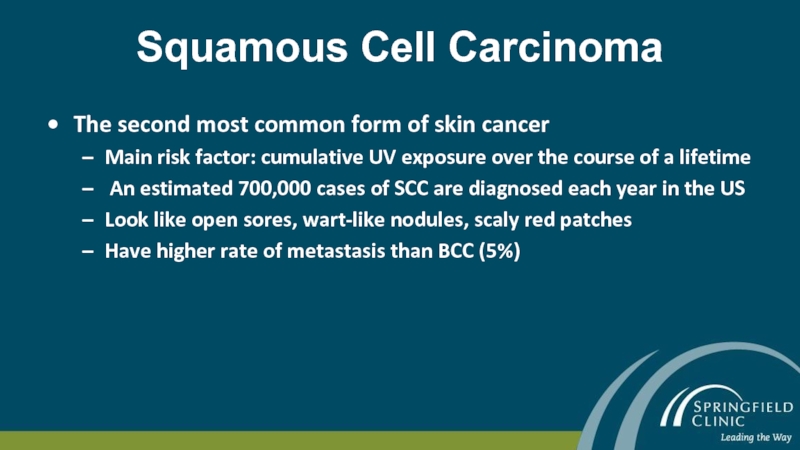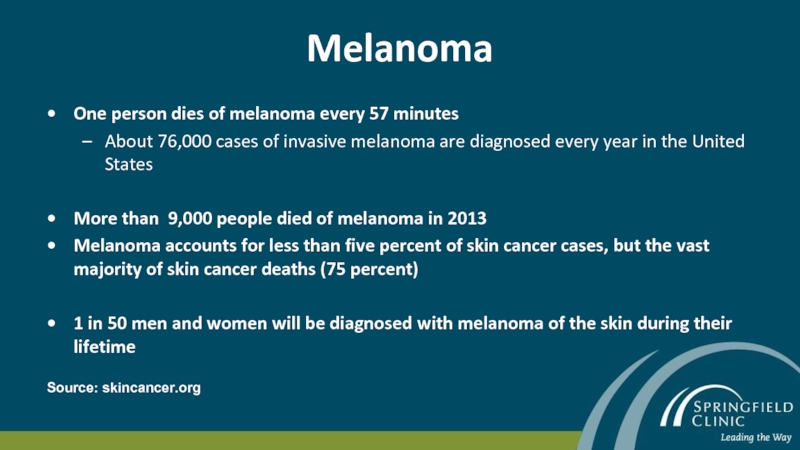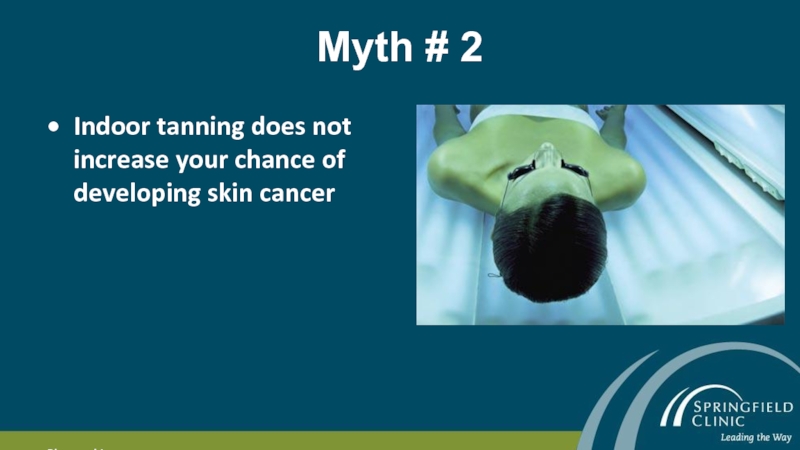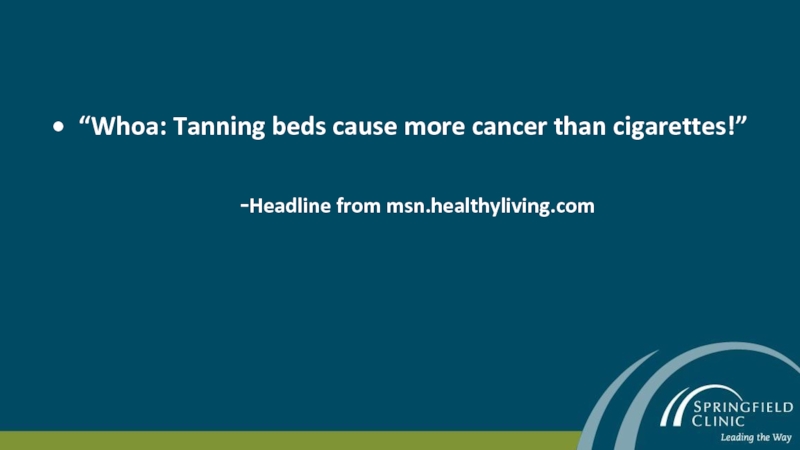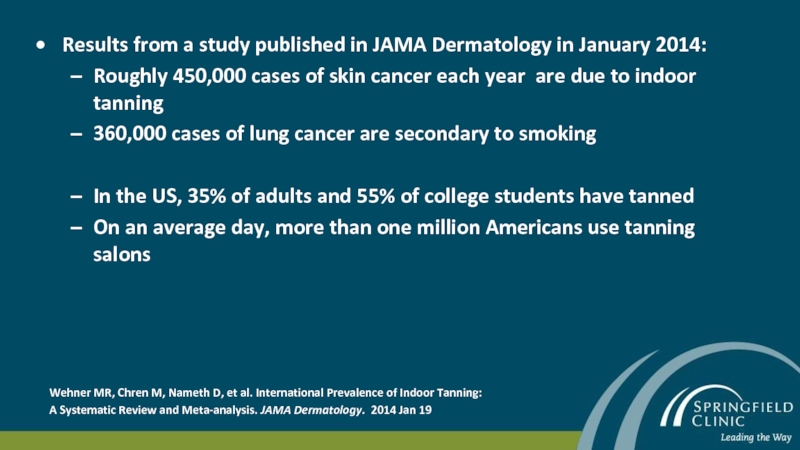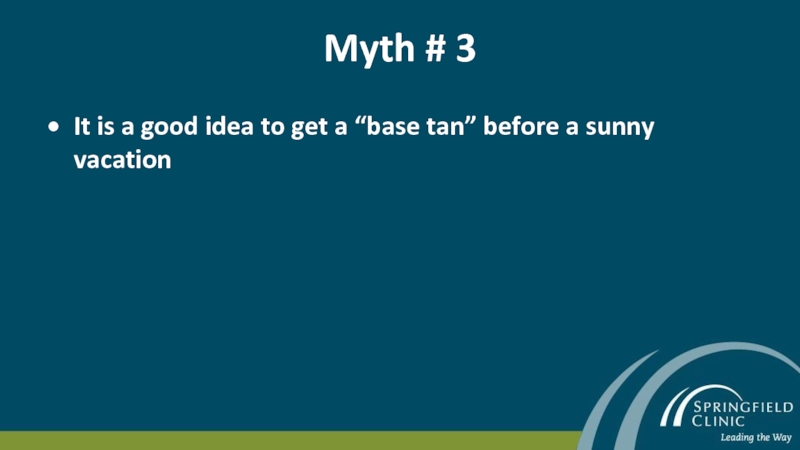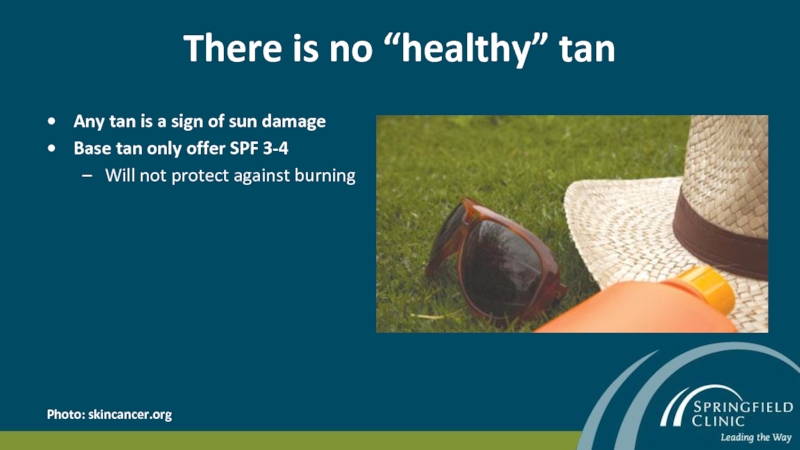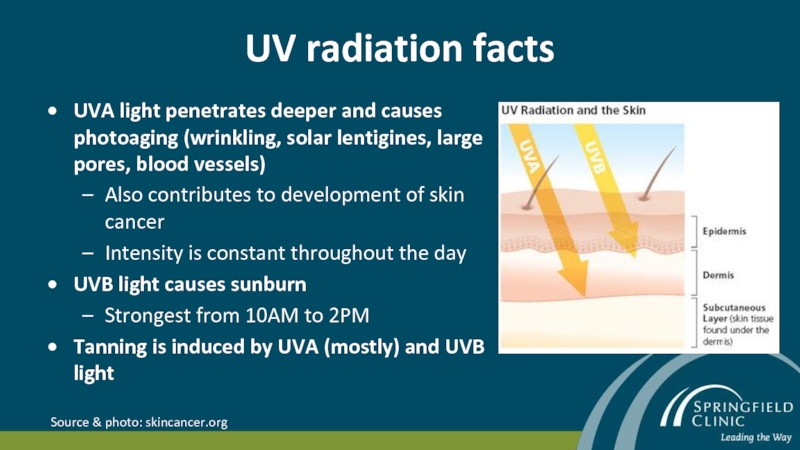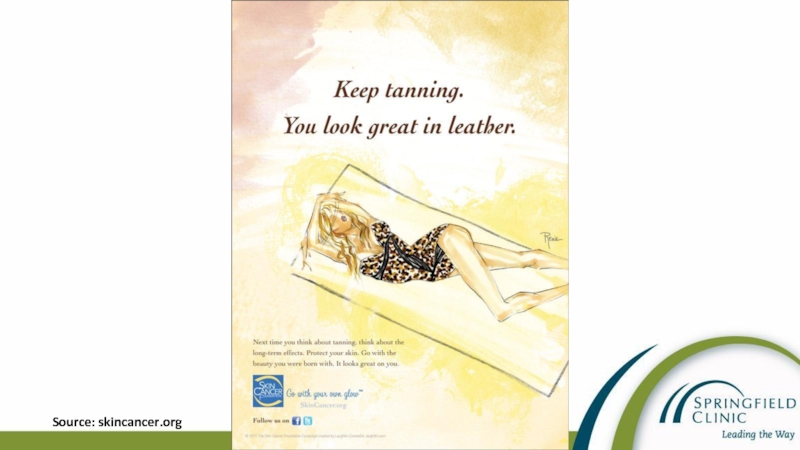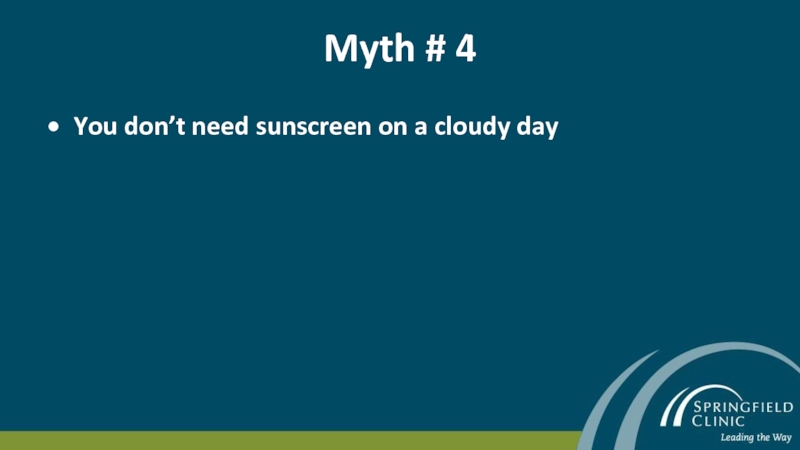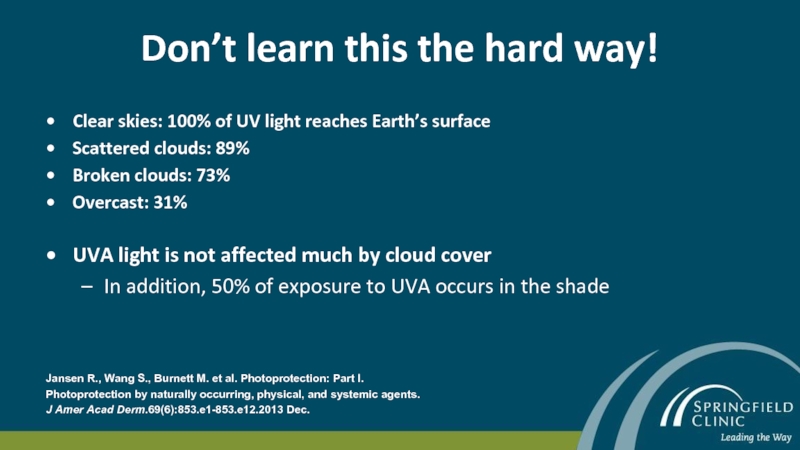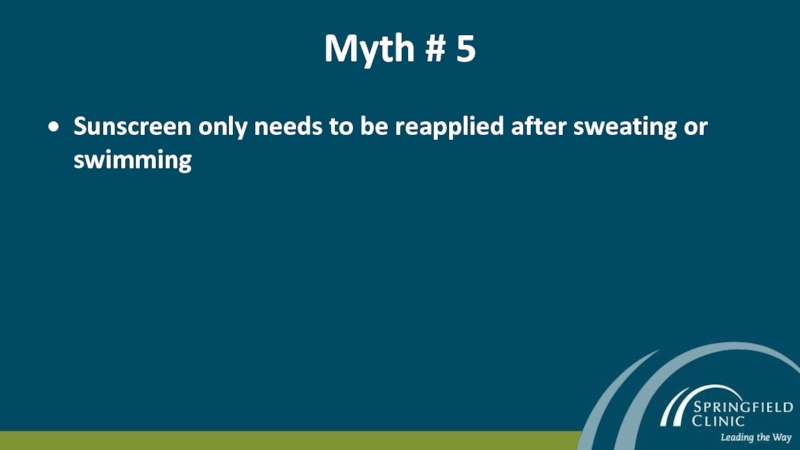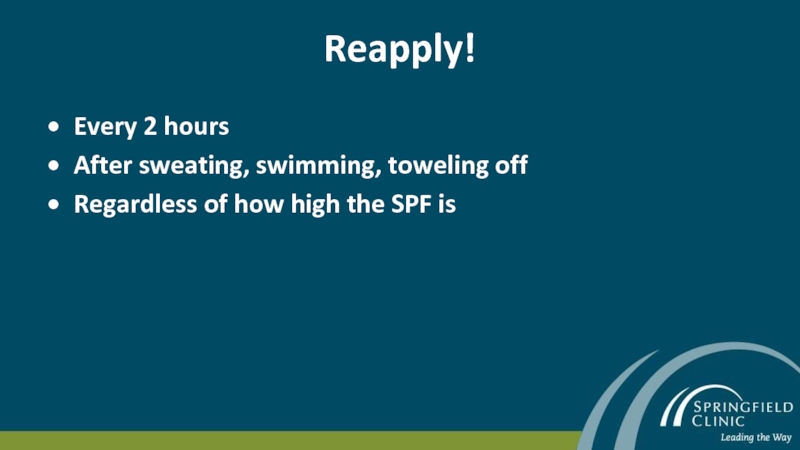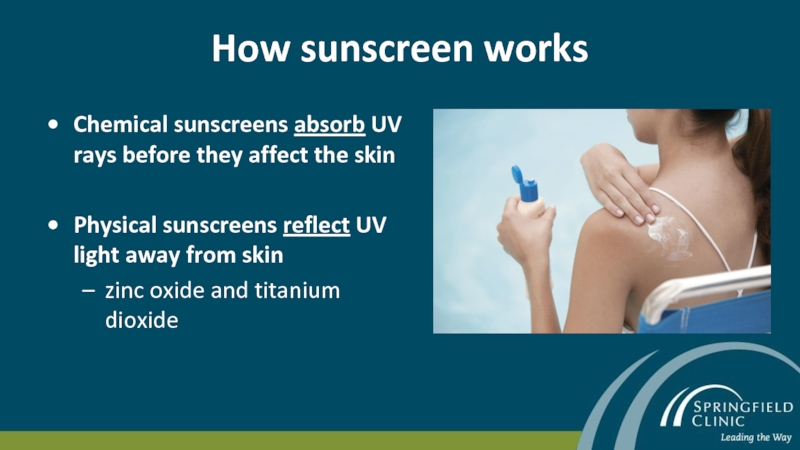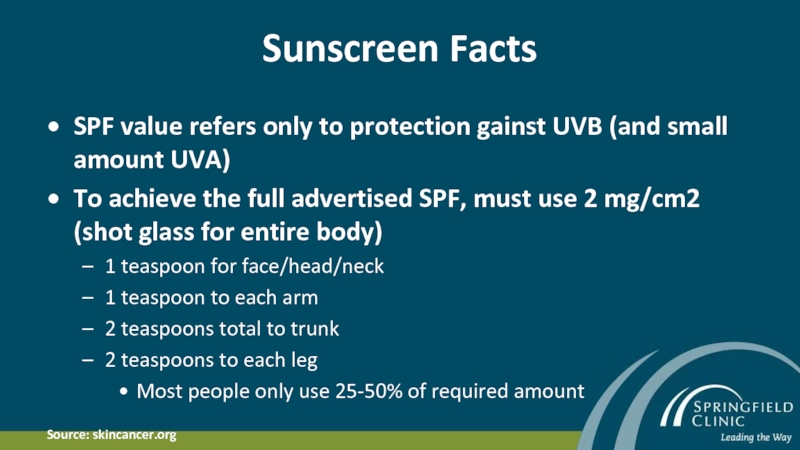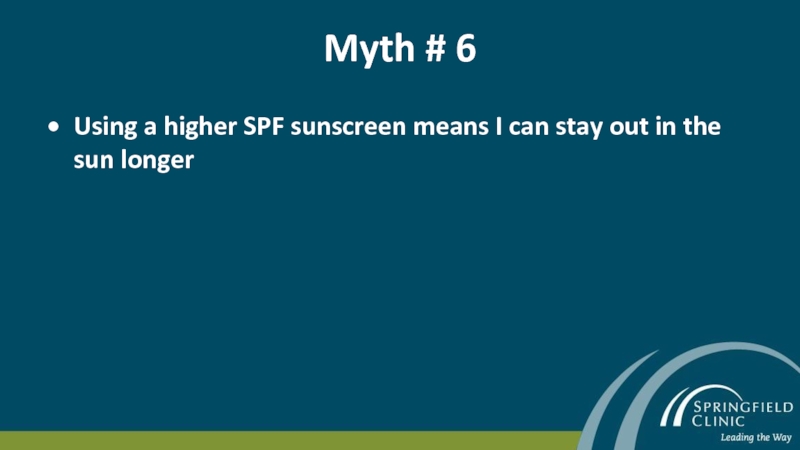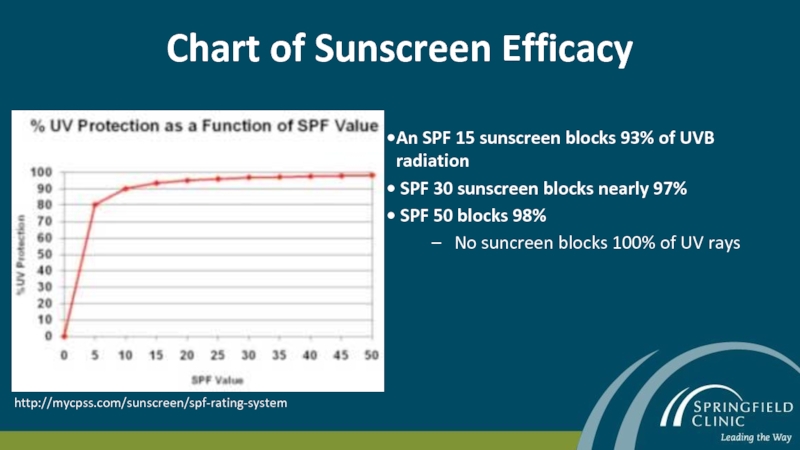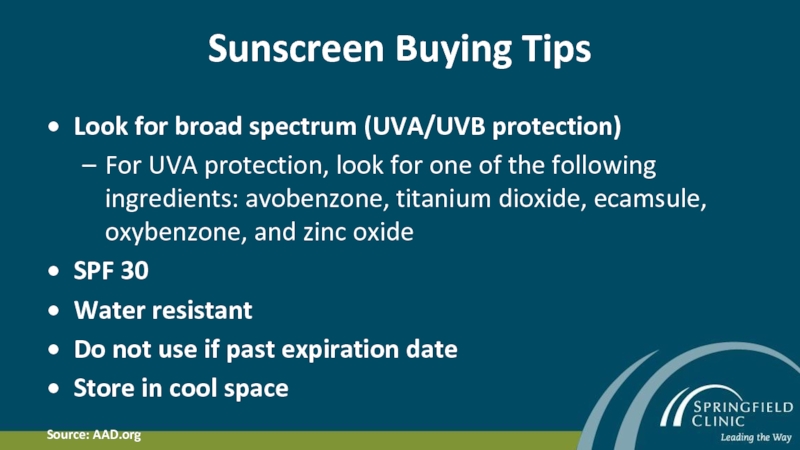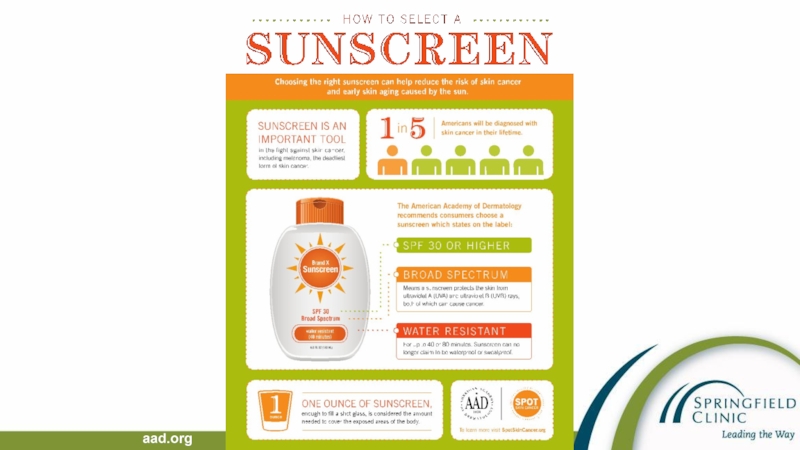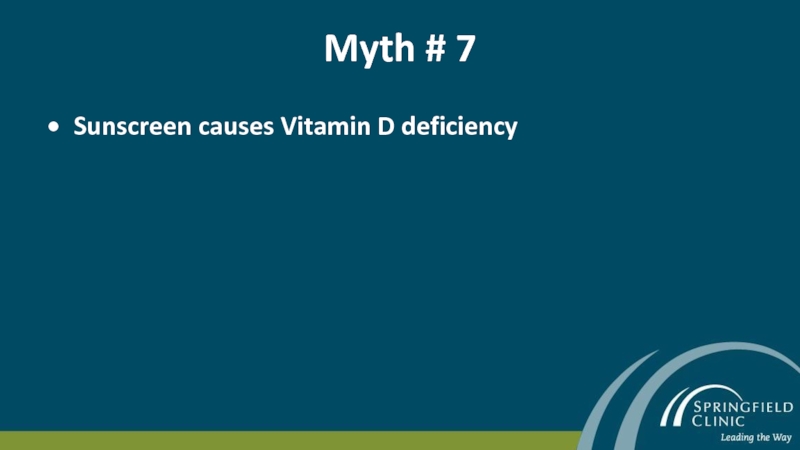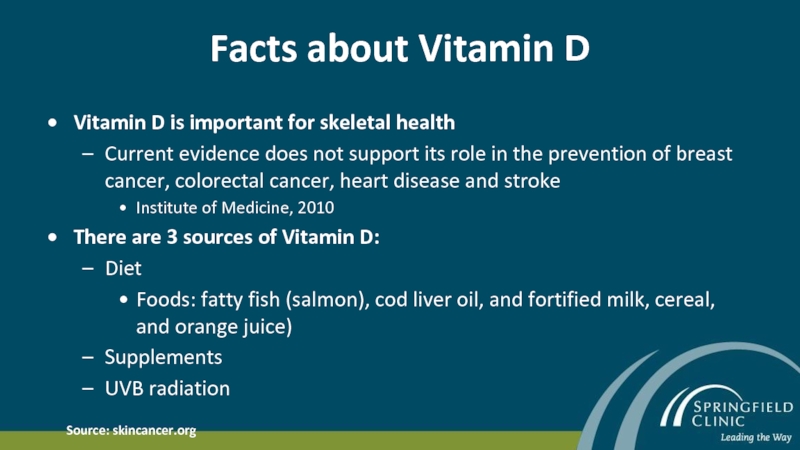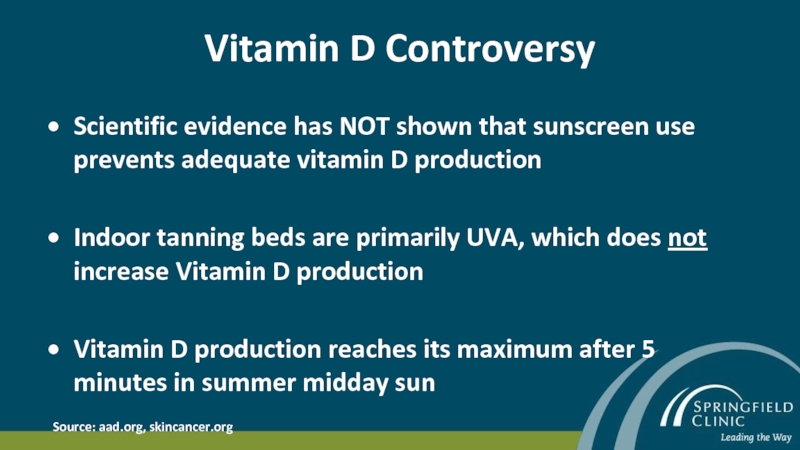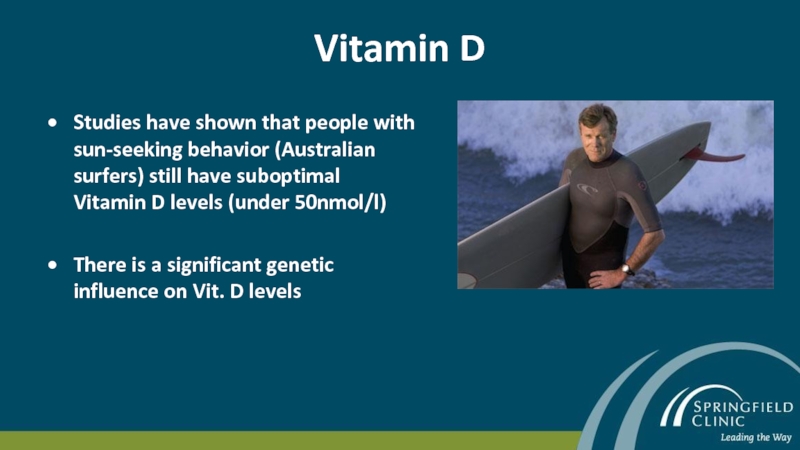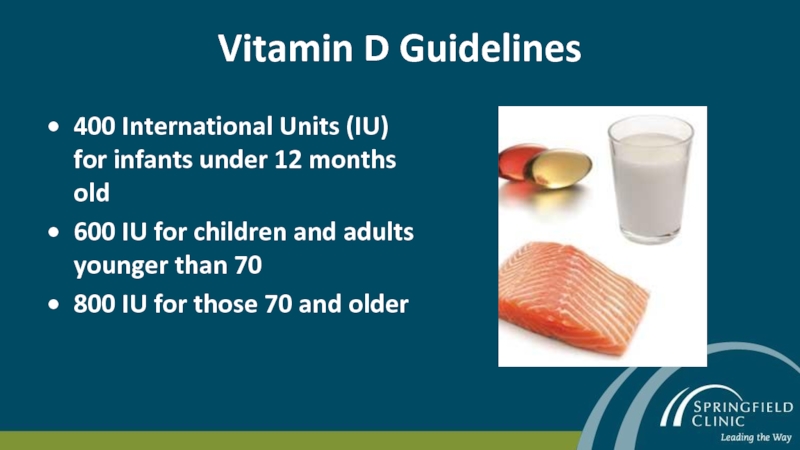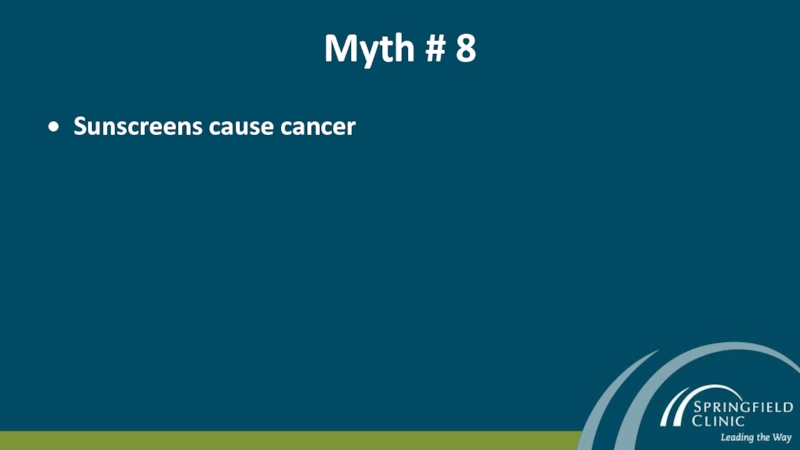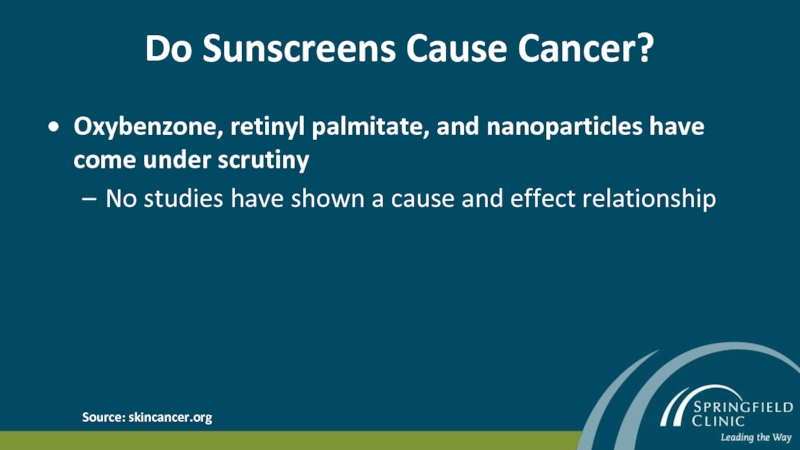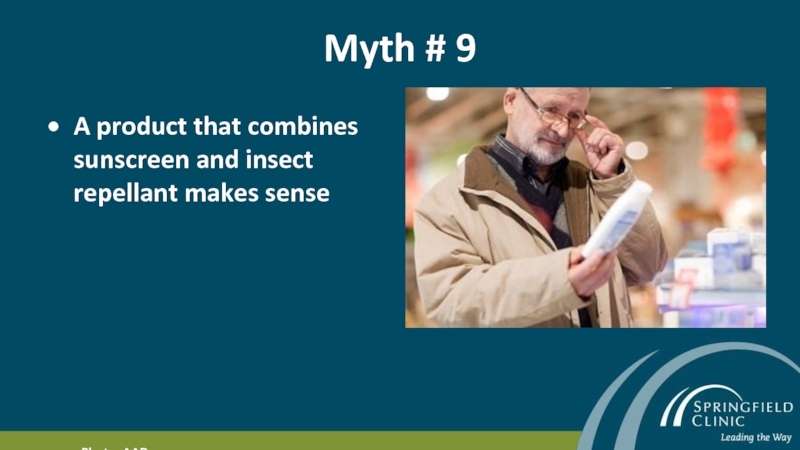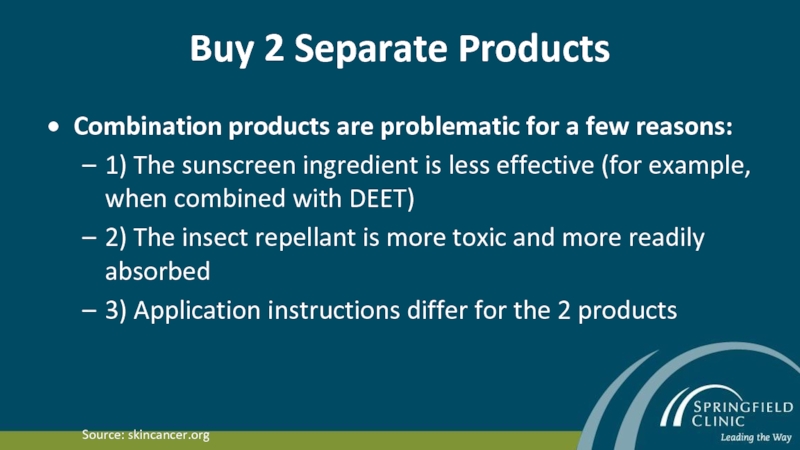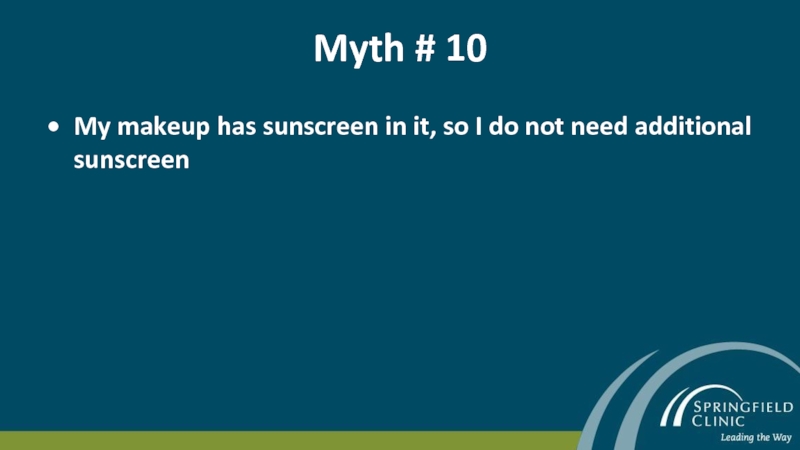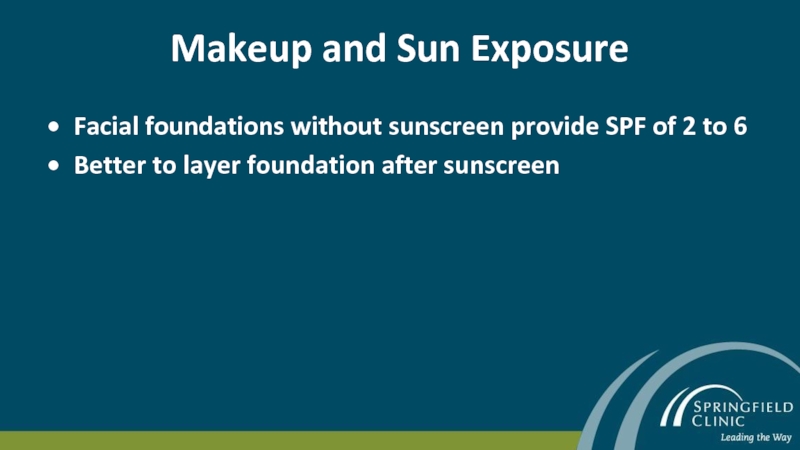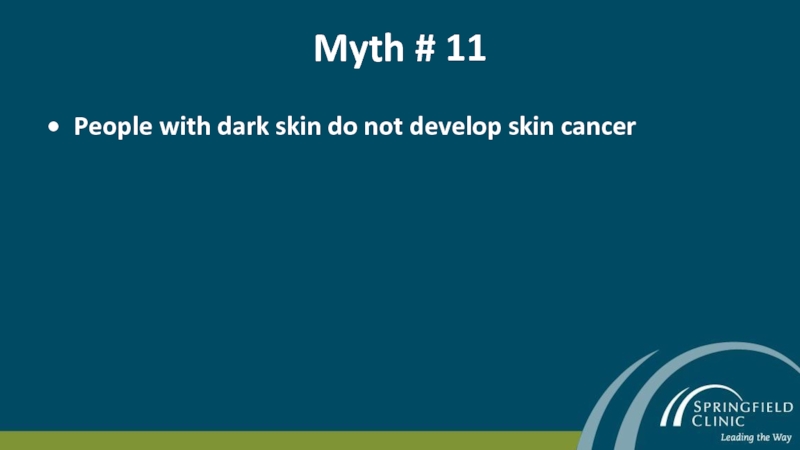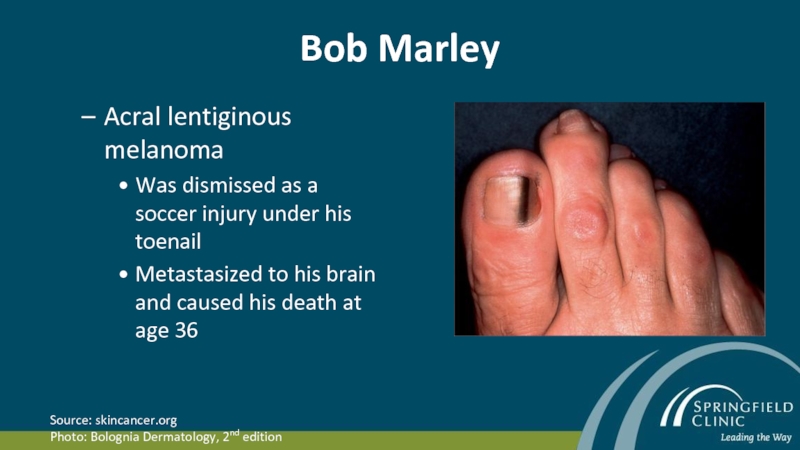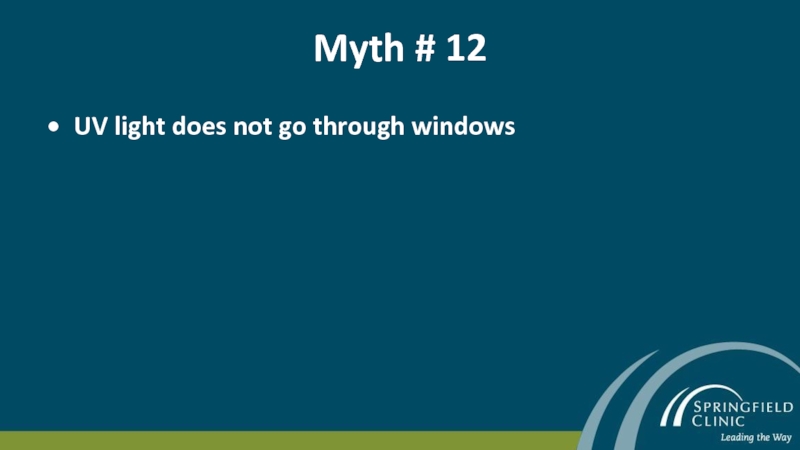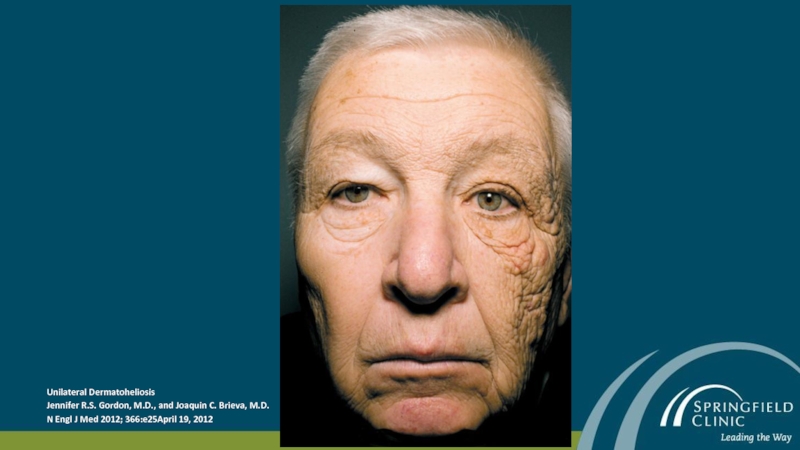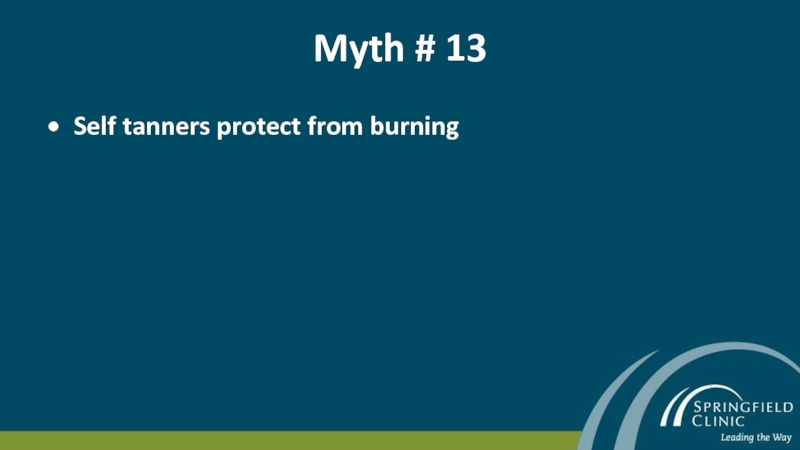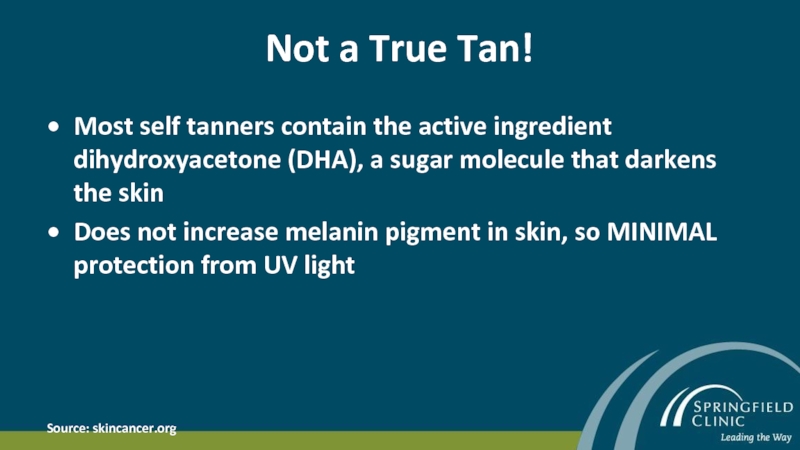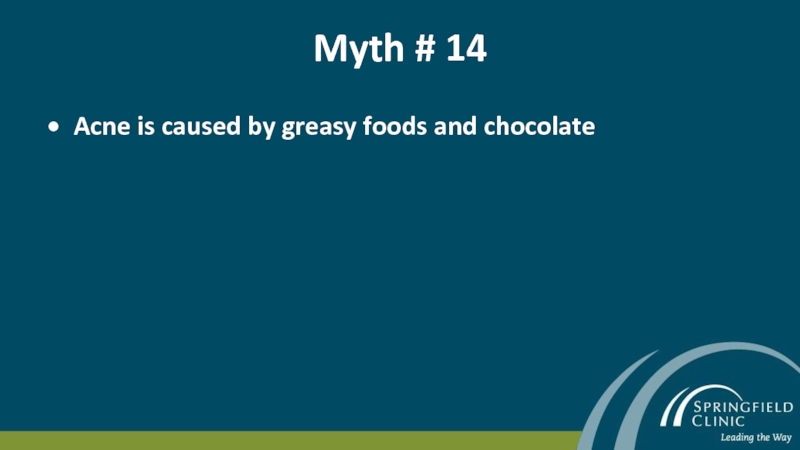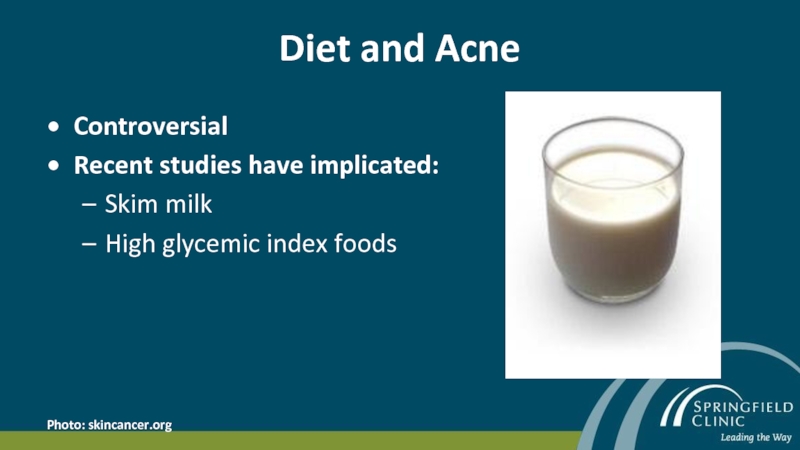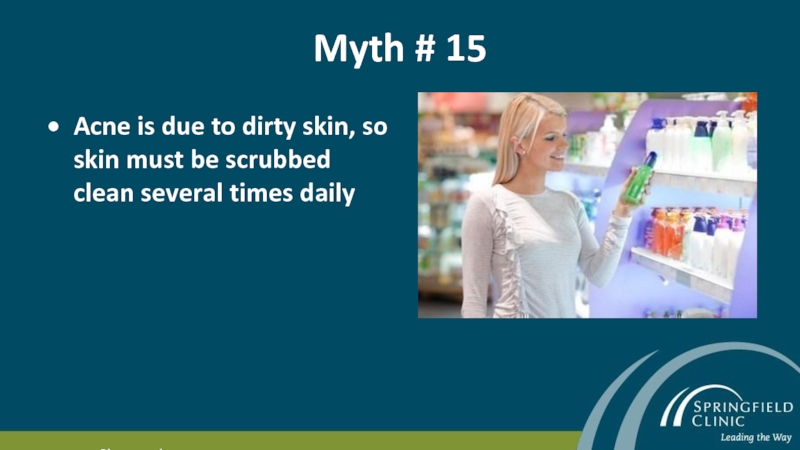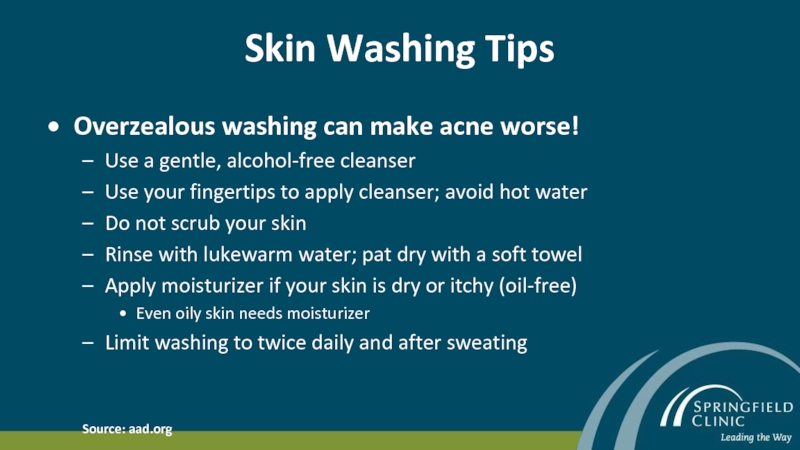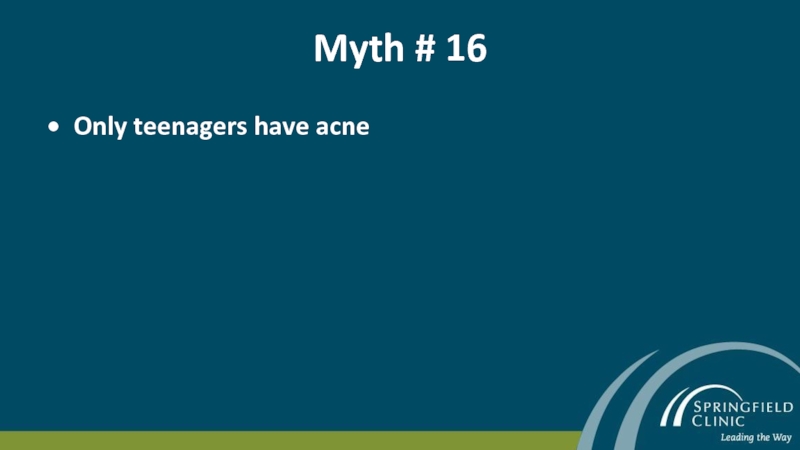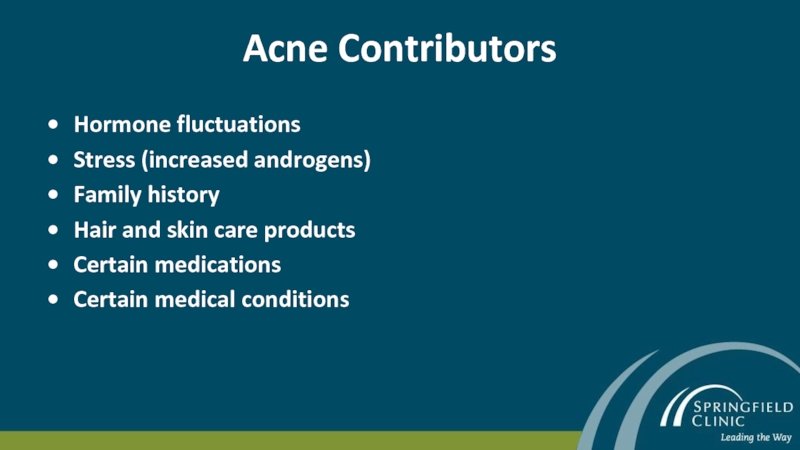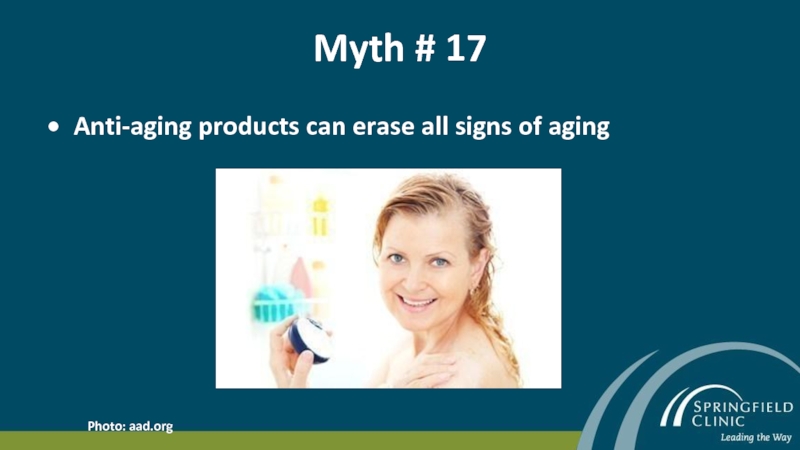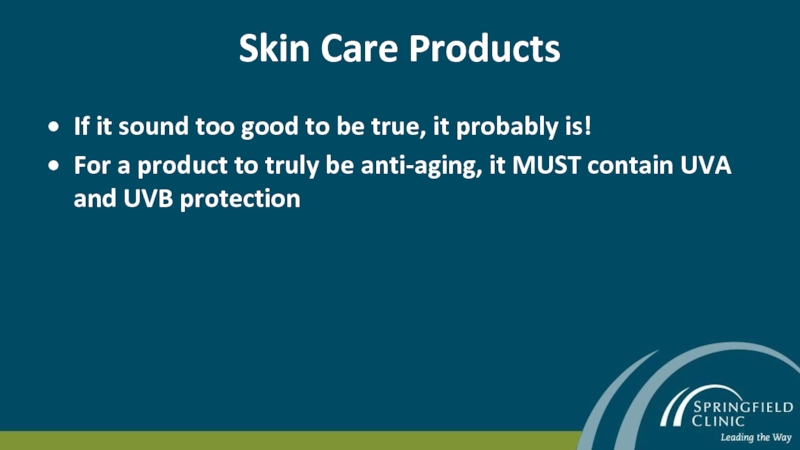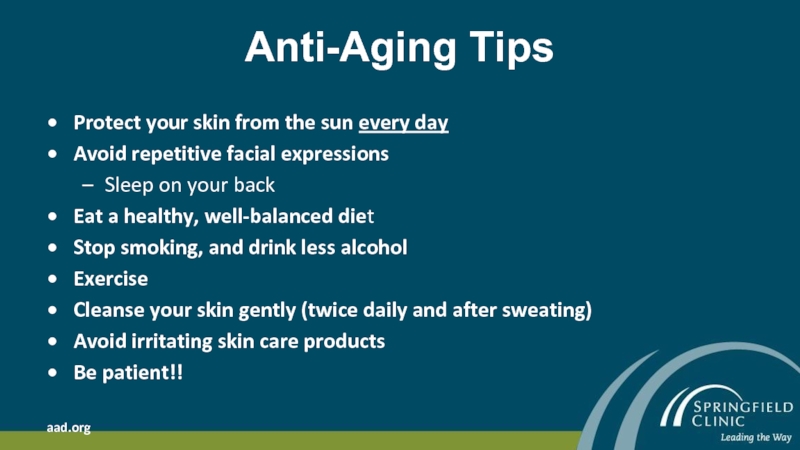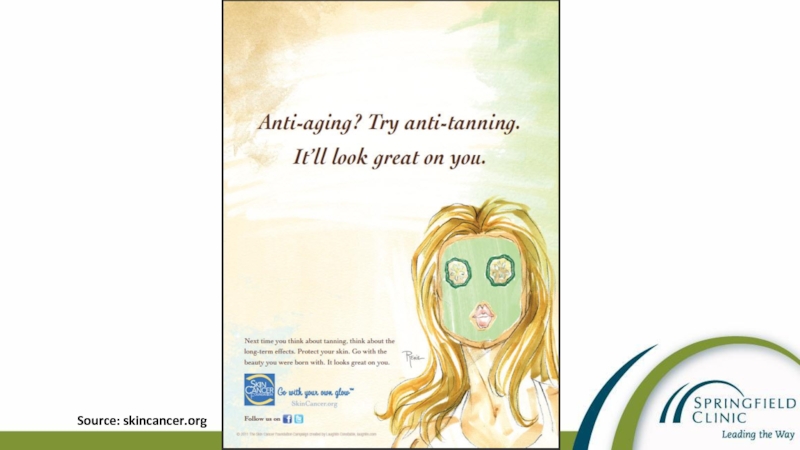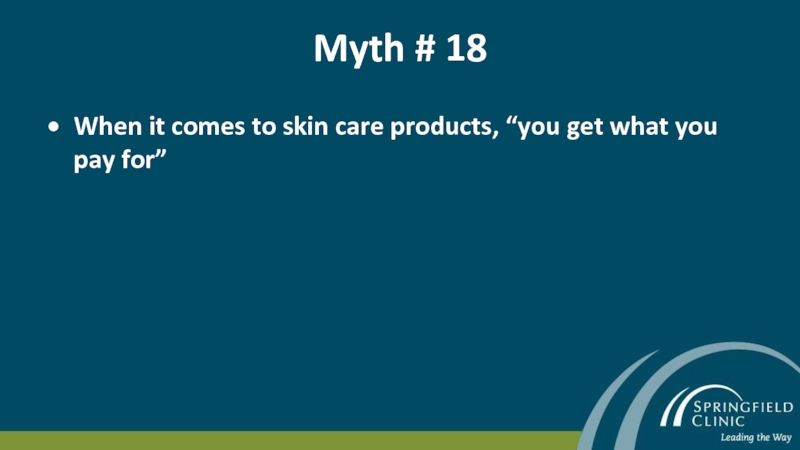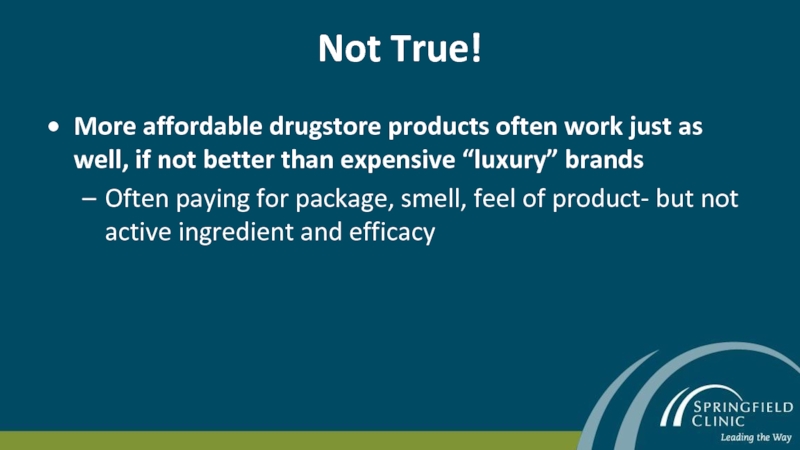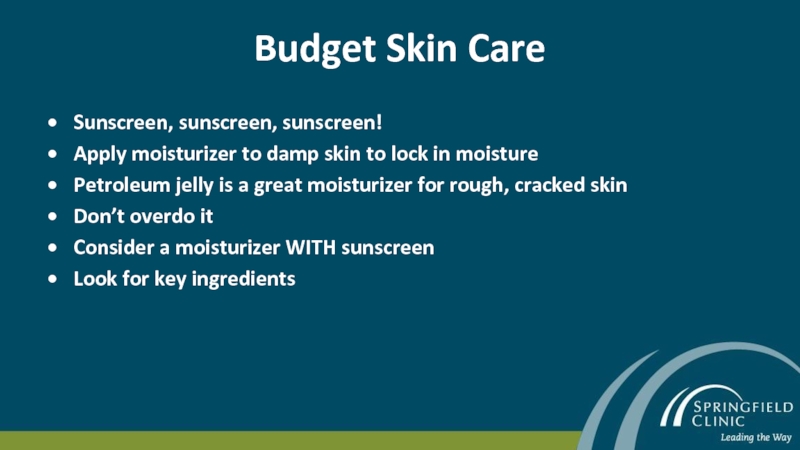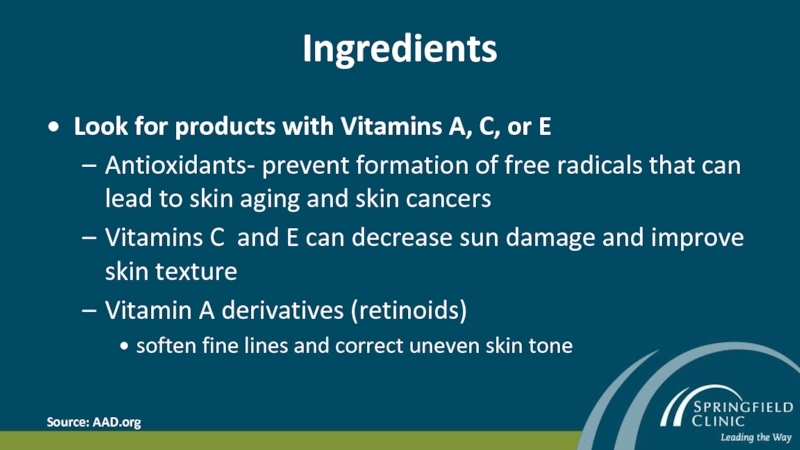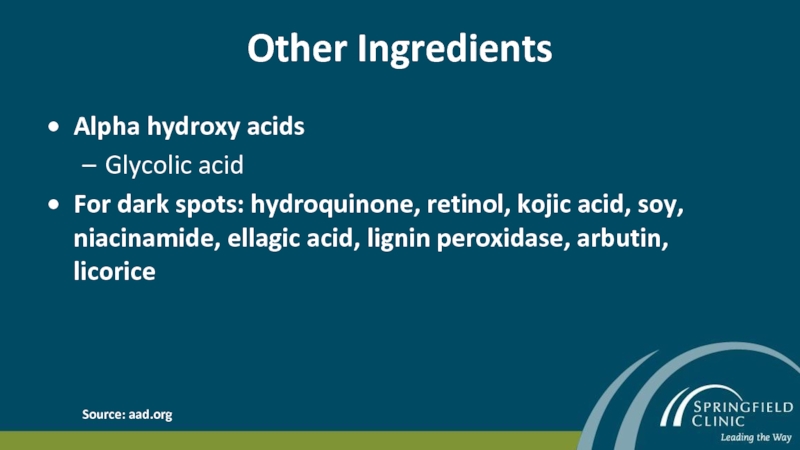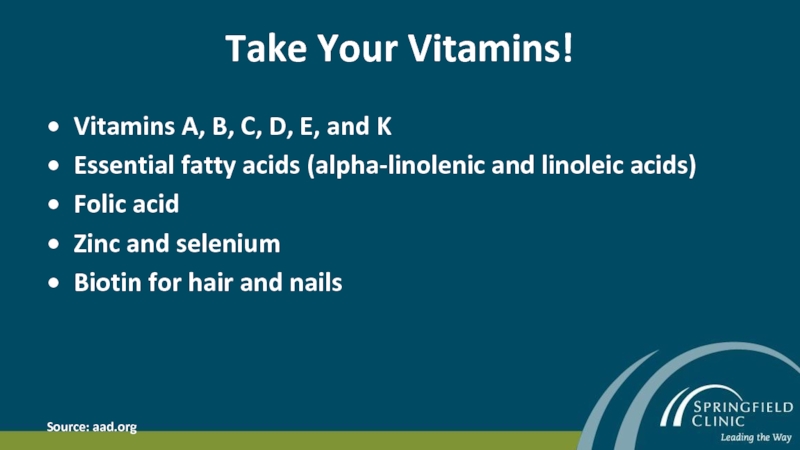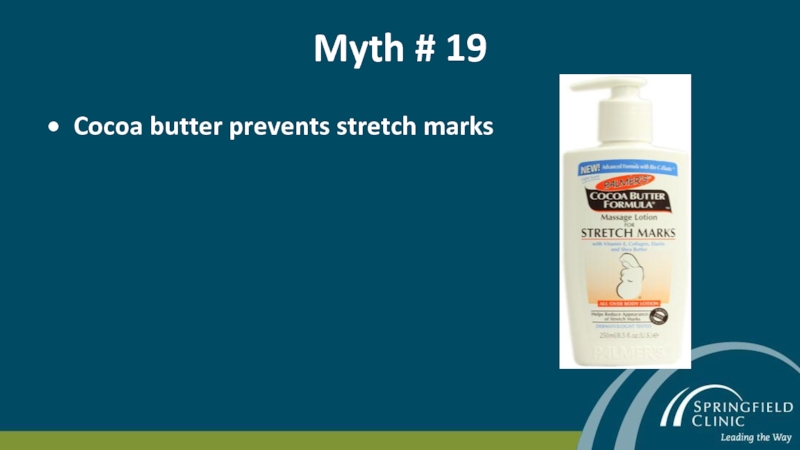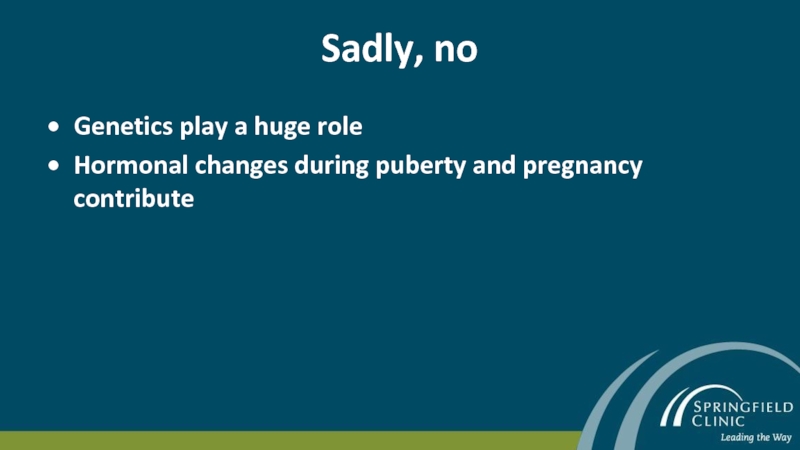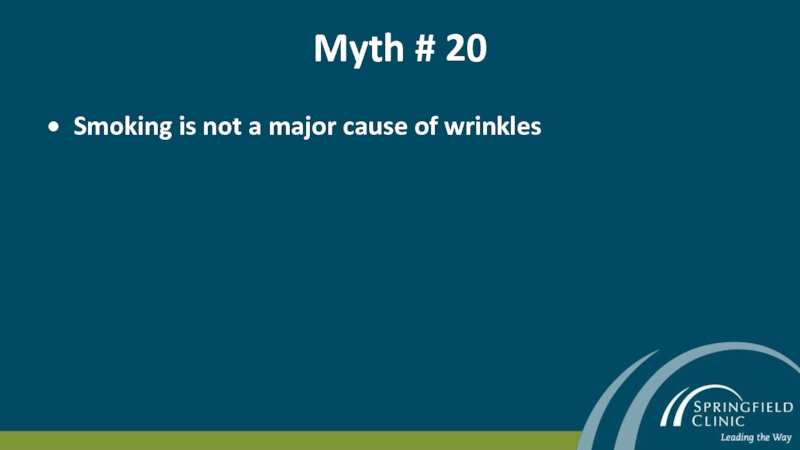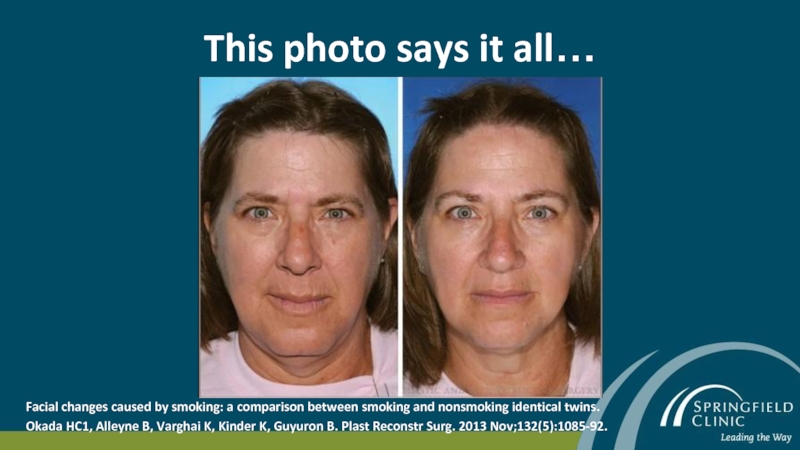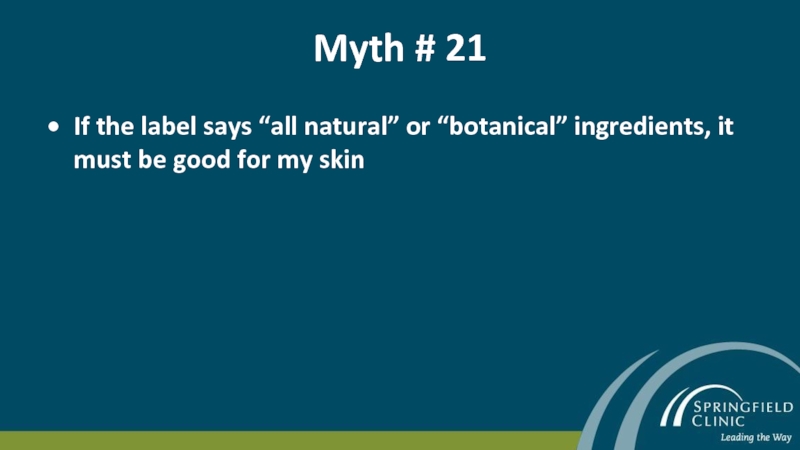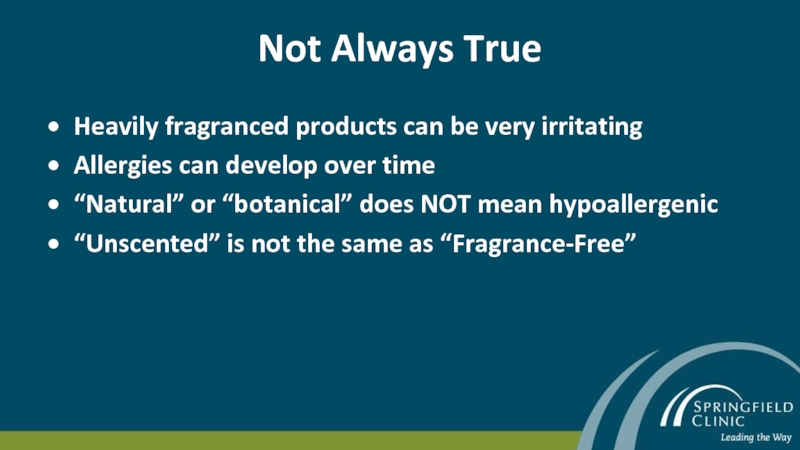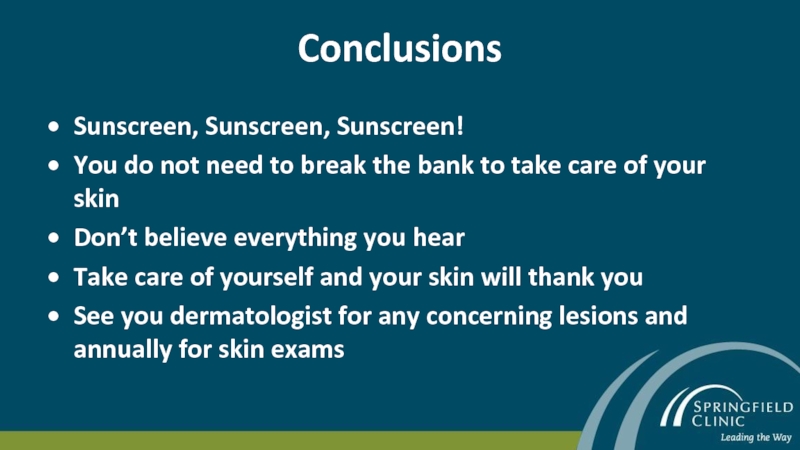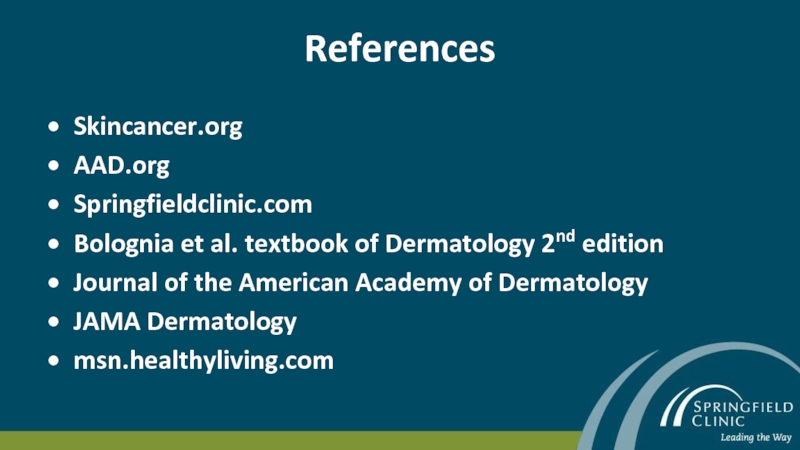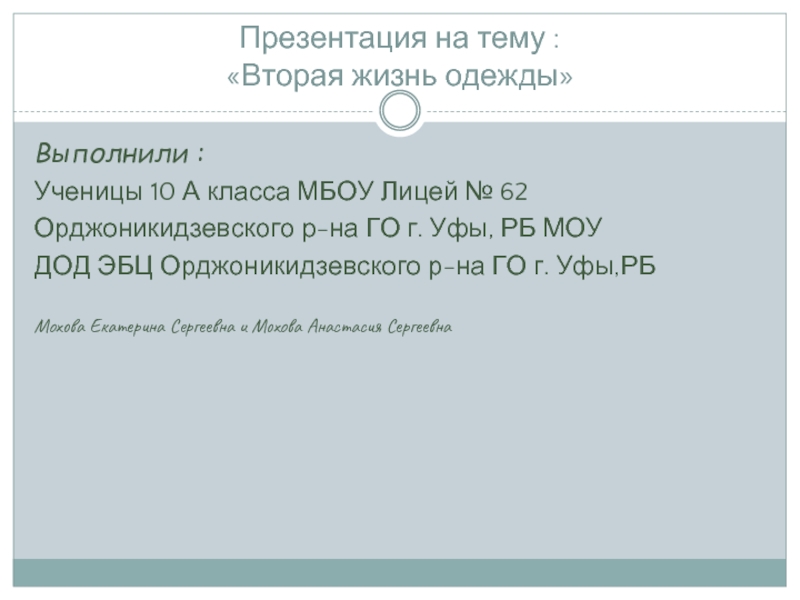- Главная
- Разное
- Дизайн
- Бизнес и предпринимательство
- Аналитика
- Образование
- Развлечения
- Красота и здоровье
- Финансы
- Государство
- Путешествия
- Спорт
- Недвижимость
- Армия
- Графика
- Культурология
- Еда и кулинария
- Лингвистика
- Английский язык
- Астрономия
- Алгебра
- Биология
- География
- Детские презентации
- Информатика
- История
- Литература
- Маркетинг
- Математика
- Медицина
- Менеджмент
- Музыка
- МХК
- Немецкий язык
- ОБЖ
- Обществознание
- Окружающий мир
- Педагогика
- Русский язык
- Технология
- Физика
- Философия
- Химия
- Шаблоны, картинки для презентаций
- Экология
- Экономика
- Юриспруденция
Skin Care Myths: Separating Fact from Fiction Vivianne C. Beyer, MD Dermatology презентация
Содержание
- 1. Skin Care Myths: Separating Fact from Fiction Vivianne C. Beyer, MD Dermatology
- 3. Disclosures I have no conflicts of interest to declare
- 4. Objectives Discuss common myths, misconceptions, old wives’
- 5. Your Skin: A Vital Organ The largest
- 6. Myth # 1 Skin cancer only happens in older people
- 7. Fact: Melanoma is the most
- 8. Skin Cancer Skin cancer is the most
- 9. Basal Cell Carcinoma Basal cell carcinoma is
- 10. Squamous Cell Carcinoma The second most common
- 11. Melanoma One person dies of melanoma
- 12. Myth # 2 Indoor tanning does not
- 13. Tanning Ultraviolet radiation (UVR) is a proven
- 14. “Whoa: Tanning beds cause more cancer than cigarettes!” -Headline from msn.healthyliving.com
- 15. Results from a study published in JAMA
- 16. Myth # 3 It is a good
- 17. There is no “healthy” tan Any tan
- 18. UV radiation facts UVA light penetrates deeper
- 19. Source: skincancer.org
- 20. Myth # 4 You don’t need sunscreen on a cloudy day
- 21. Don’t learn this the hard way! Clear
- 22. Myth # 5 Sunscreen only needs to be reapplied after sweating or swimming
- 23. Reapply! Every 2 hours After sweating, swimming,
- 24. How sunscreen works Chemical sunscreens absorb UV
- 25. Sunscreen Facts SPF value refers only to
- 26. Myth # 6 Using a higher
- 27. Chart of Sunscreen Efficacy An SPF
- 28. Sunscreen Buying Tips Look for broad spectrum
- 29. aad.org
- 30. Myth # 7 Sunscreen causes Vitamin D deficiency
- 31. Facts about Vitamin D Vitamin D is
- 32. Vitamin D Controversy Scientific evidence has NOT
- 33. Vitamin D Studies have shown that people
- 34. Vitamin D Guidelines 400 International Units (IU)
- 35. Myth # 8 Sunscreens cause cancer
- 36. Do Sunscreens Cause Cancer? Oxybenzone, retinyl palmitate,
- 37. Myth # 9 A product that
- 38. Buy 2 Separate Products Combination products are
- 39. Myth # 10 My makeup has sunscreen
- 40. Makeup and Sun Exposure Facial foundations without
- 41. Myth # 11 People with dark skin do not develop skin cancer
- 42. Photo: Billboard.com
- 43. Bob Marley Acral lentiginous melanoma Was dismissed
- 44. Skin Cancer Affects Everyone Dark-skinned patients who
- 45. Myth # 12 UV light does not go through windows
- 47. Myth # 13 Self tanners protect from burning
- 48. Not a True Tan! Most self tanners
- 49. Myth # 14 Acne is caused by greasy foods and chocolate
- 50. Diet and Acne Controversial Recent studies have
- 51. Myth # 15 Acne is due to
- 52. Skin Washing Tips Overzealous washing can make
- 53. Myth # 16 Only teenagers have acne
- 54. Acne Contributors Hormone fluctuations Stress (increased androgens)
- 55. Myth # 17 Anti-aging products can
- 56. Skin Care Products If it sound too
- 57. Anti-Aging Tips Protect your skin from the
- 58. Source: skincancer.org
- 59. Myth # 18 When it comes to
- 60. Not True! More affordable drugstore products often
- 61. Budget Skin Care Sunscreen, sunscreen, sunscreen! Apply
- 62. Ingredients Look for products with Vitamins A,
- 63. Other Ingredients Alpha hydroxy acids Glycolic acid
- 64. Take Your Vitamins! Vitamins A, B, C,
- 65. Myth # 19 Cocoa butter prevents stretch
- 66. Sadly, no Genetics play a huge role Hormonal changes during puberty and pregnancy contribute
- 67. Myth # 20 Smoking is not a major cause of wrinkles
- 68. This photo says it all…
- 69. Myth # 21 If the label says
- 70. Not Always True Heavily fragranced products can
- 71. Conclusions Sunscreen, Sunscreen, Sunscreen! You do not
- 72. References Skincancer.org AAD.org Springfieldclinic.com Bolognia et al.
- 73. Thank you! Questions?
Слайд 4Objectives
Discuss common myths, misconceptions, old wives’ tales
Discuss the evidence that separates
The following topics will be discussed:
Skin cancer and prevention
Tanning
Vitamin D controversies
Skin care and beauty tips
Acne myths
Слайд 5Your Skin: A Vital Organ
The largest organ
Regulates body temperature
Stores water and
Is a sensory organ
Prevents water loss and entry of bacteria
It is essential to take care of this vital organ!
Слайд 7Fact:
Melanoma is the most common form of cancer in young
Second most common form of cancer for 15-29 year-olds
The incidence of nonmelanoma skin cancers, especially basal cell carcinoma, is rapidly rising in young adults
Source & photo: skincancer.org
Слайд 8Skin Cancer
Skin cancer is the most common form of cancer in
More than 3.5 million skin cancers are diagnosed annually
There are more new cases of skin cancer each year than there are cancers of the breast, prostate, lung and colon combined
One in five Americans will develop skin cancer in the course of a lifetime
Source: skincancer.org
Слайд 9Basal Cell Carcinoma
Basal cell carcinoma is the most common form of
Main risk factor is cumulative and intense bursts of sun exposure
About 2.8 million cases are diagnosed per year in the US
Rarely metastasize but can be locally disfiguring/destructive
Photo: skincancer.org
Слайд 10Squamous Cell Carcinoma
The second most common form of skin cancer
Main risk
An estimated 700,000 cases of SCC are diagnosed each year in the US
Look like open sores, wart-like nodules, scaly red patches
Have higher rate of metastasis than BCC (5%)
Слайд 11Melanoma
One person dies of melanoma every 57 minutes
About 76,000 cases
More than 9,000 people died of melanoma in 2013
Melanoma accounts for less than five percent of skin cancer cases, but the vast majority of skin cancer deaths (75 percent)
1 in 50 men and women will be diagnosed with melanoma of the skin during their lifetime
Source: skincancer.org
Слайд 12Myth # 2
Indoor tanning does not increase your chance of developing
Photo: skincancer.org
Слайд 13Tanning
Ultraviolet radiation (UVR) is a proven human carcinogen
One indoor UV tanning
squamous cell carcinoma by 67%
basal cell carcinoma by 29%
melanoma by 20%
76% of melanoma cases among 18-to-29-year-olds are due to tanning bed use
People who first use a tanning bed before age 35 increase their risk for melanoma by 75 percent
Source: skincancer.org
Слайд 15Results from a study published in JAMA Dermatology in January 2014:
Roughly
360,000 cases of lung cancer are secondary to smoking
In the US, 35% of adults and 55% of college students have tanned
On an average day, more than one million Americans use tanning salons
Wehner MR, Chren M, Nameth D, et al. International Prevalence of Indoor Tanning:
A Systematic Review and Meta-analysis. JAMA Dermatology. 2014 Jan 19
Слайд 17There is no “healthy” tan
Any tan is a sign of sun
Base tan only offer SPF 3-4
Will not protect against burning
Photo: skincancer.org
Слайд 18UV radiation facts
UVA light penetrates deeper and causes photoaging (wrinkling, solar
Also contributes to development of skin cancer
Intensity is constant throughout the day
UVB light causes sunburn
Strongest from 10AM to 2PM
Tanning is induced by UVA (mostly) and UVB light
Source & photo: skincancer.org
Слайд 21Don’t learn this the hard way!
Clear skies: 100% of UV light
Scattered clouds: 89%
Broken clouds: 73%
Overcast: 31%
UVA light is not affected much by cloud cover
In addition, 50% of exposure to UVA occurs in the shade
Jansen R., Wang S., Burnett M. et al. Photoprotection: Part I.
Photoprotection by naturally occurring, physical, and systemic agents.
J Amer Acad Derm.69(6):853.e1-853.e12.2013 Dec.
Слайд 23Reapply!
Every 2 hours
After sweating, swimming, toweling off
Regardless of how high the
Слайд 24How sunscreen works
Chemical sunscreens absorb UV rays before they affect the
Physical sunscreens reflect UV light away from skin
zinc oxide and titanium dioxide
Photo: skincancer.org
Слайд 25Sunscreen Facts
SPF value refers only to protection gainst UVB (and small
To achieve the full advertised SPF, must use 2 mg/cm2 (shot glass for entire body)
1 teaspoon for face/head/neck
1 teaspoon to each arm
2 teaspoons total to trunk
2 teaspoons to each leg
Most people only use 25-50% of required amount
Source: skincancer.org
Слайд 27Chart of Sunscreen Efficacy
An SPF 15 sunscreen blocks 93% of UVB
SPF 30 sunscreen blocks nearly 97%
SPF 50 blocks 98%
No suncreen blocks 100% of UV rays
http://mycpss.com/sunscreen/spf-rating-system
Слайд 28Sunscreen Buying Tips
Look for broad spectrum (UVA/UVB protection)
For UVA protection, look
SPF 30
Water resistant
Do not use if past expiration date
Store in cool space
Source: AAD.org
Слайд 31Facts about Vitamin D
Vitamin D is important for skeletal health
Current evidence
Institute of Medicine, 2010
There are 3 sources of Vitamin D:
Diet
Foods: fatty fish (salmon), cod liver oil, and fortified milk, cereal, and orange juice)
Supplements
UVB radiation
Source: skincancer.org
Слайд 32Vitamin D Controversy
Scientific evidence has NOT shown that sunscreen use prevents
Indoor tanning beds are primarily UVA, which does not increase Vitamin D production
Vitamin D production reaches its maximum after 5 minutes in summer midday sun
Source: aad.org, skincancer.org
Слайд 33Vitamin D
Studies have shown that people with sun-seeking behavior (Australian surfers)
There is a significant genetic influence on Vit. D levels
Photo: skincancer.org
Слайд 34Vitamin D Guidelines
400 International Units (IU) for infants under 12 months
600 IU for children and adults younger than 70
800 IU for those 70 and older
Source: AAD.org
Слайд 36Do Sunscreens Cause Cancer?
Oxybenzone, retinyl palmitate, and nanoparticles have come under
No studies have shown a cause and effect relationship
Source: skincancer.org
Слайд 38Buy 2 Separate Products
Combination products are problematic for a few reasons:
1)
2) The insect repellant is more toxic and more readily absorbed
3) Application instructions differ for the 2 products
Source: skincancer.org
Слайд 40Makeup and Sun Exposure
Facial foundations without sunscreen provide SPF of 2
Better to layer foundation after sunscreen
Слайд 43Bob Marley
Acral lentiginous melanoma
Was dismissed as a soccer injury under his
Metastasized to his brain and caused his death at age 36
Source: skincancer.org
Photo: Bolognia Dermatology, 2nd edition
Слайд 44Skin Cancer Affects Everyone
Dark-skinned patients who develop skin cancer have a
Why?
Delay in diagnosis
Melanomas more likely to appear in mouth, on palms/soles, or under nails
So while skin cancer is much more common among lighter-skinned people, it tends to be more deadly among people of color
Source: skincancer.org
Слайд 46
Unilateral Dermatoheliosis
Jennifer R.S. Gordon, M.D., and Joaquin C. Brieva, M.D.
N Engl
Слайд 48Not a True Tan!
Most self tanners contain the active ingredient dihydroxyacetone
Does not increase melanin pigment in skin, so MINIMAL protection from UV light
Source: skincancer.org
Слайд 50Diet and Acne
Controversial
Recent studies have implicated:
Skim milk
High glycemic index foods
Photo: skincancer.org
Слайд 51Myth # 15
Acne is due to dirty skin, so skin must
Photo: aad.org
Слайд 52Skin Washing Tips
Overzealous washing can make acne worse!
Use a gentle, alcohol-free
Use your fingertips to apply cleanser; avoid hot water
Do not scrub your skin
Rinse with lukewarm water; pat dry with a soft towel
Apply moisturizer if your skin is dry or itchy (oil-free)
Even oily skin needs moisturizer
Limit washing to twice daily and after sweating
Source: aad.org
Слайд 54Acne Contributors
Hormone fluctuations
Stress (increased androgens)
Family history
Hair and skin care products
Certain
Certain medical conditions
Слайд 56Skin Care Products
If it sound too good to be true, it
For a product to truly be anti-aging, it MUST contain UVA and UVB protection
Слайд 57Anti-Aging Tips
Protect your skin from the sun every day
Avoid repetitive
Sleep on your back
Eat a healthy, well-balanced diet
Stop smoking, and drink less alcohol
Exercise
Cleanse your skin gently (twice daily and after sweating)
Avoid irritating skin care products
Be patient!!
aad.org
Слайд 60Not True!
More affordable drugstore products often work just as well, if
Often paying for package, smell, feel of product- but not active ingredient and efficacy
Слайд 61Budget Skin Care
Sunscreen, sunscreen, sunscreen!
Apply moisturizer to damp skin to lock
Petroleum jelly is a great moisturizer for rough, cracked skin
Don’t overdo it
Consider a moisturizer WITH sunscreen
Look for key ingredients
Слайд 62Ingredients
Look for products with Vitamins A, C, or E
Antioxidants- prevent
Vitamins C and E can decrease sun damage and improve skin texture
Vitamin A derivatives (retinoids)
soften fine lines and correct uneven skin tone
Source: AAD.org
Слайд 63Other Ingredients
Alpha hydroxy acids
Glycolic acid
For dark spots: hydroquinone, retinol, kojic
Source: aad.org
Слайд 64Take Your Vitamins!
Vitamins A, B, C, D, E, and K
Essential fatty
Folic acid
Zinc and selenium
Biotin for hair and nails
Source: aad.org
Слайд 68This photo says it all…
Facial changes caused by smoking: a comparison
Okada HC1, Alleyne B, Varghai K, Kinder K, Guyuron B. Plast Reconstr Surg. 2013 Nov;132(5):1085-92.
Слайд 69Myth # 21
If the label says “all natural” or “botanical” ingredients,
Слайд 70Not Always True
Heavily fragranced products can be very irritating
Allergies can develop
“Natural” or “botanical” does NOT mean hypoallergenic
“Unscented” is not the same as “Fragrance-Free”
Слайд 71Conclusions
Sunscreen, Sunscreen, Sunscreen!
You do not need to break the bank to
Don’t believe everything you hear
Take care of yourself and your skin will thank you
See you dermatologist for any concerning lesions and annually for skin exams
Слайд 72References
Skincancer.org
AAD.org
Springfieldclinic.com
Bolognia et al. textbook of Dermatology 2nd edition
Journal of the American
JAMA Dermatology
msn.healthyliving.com
